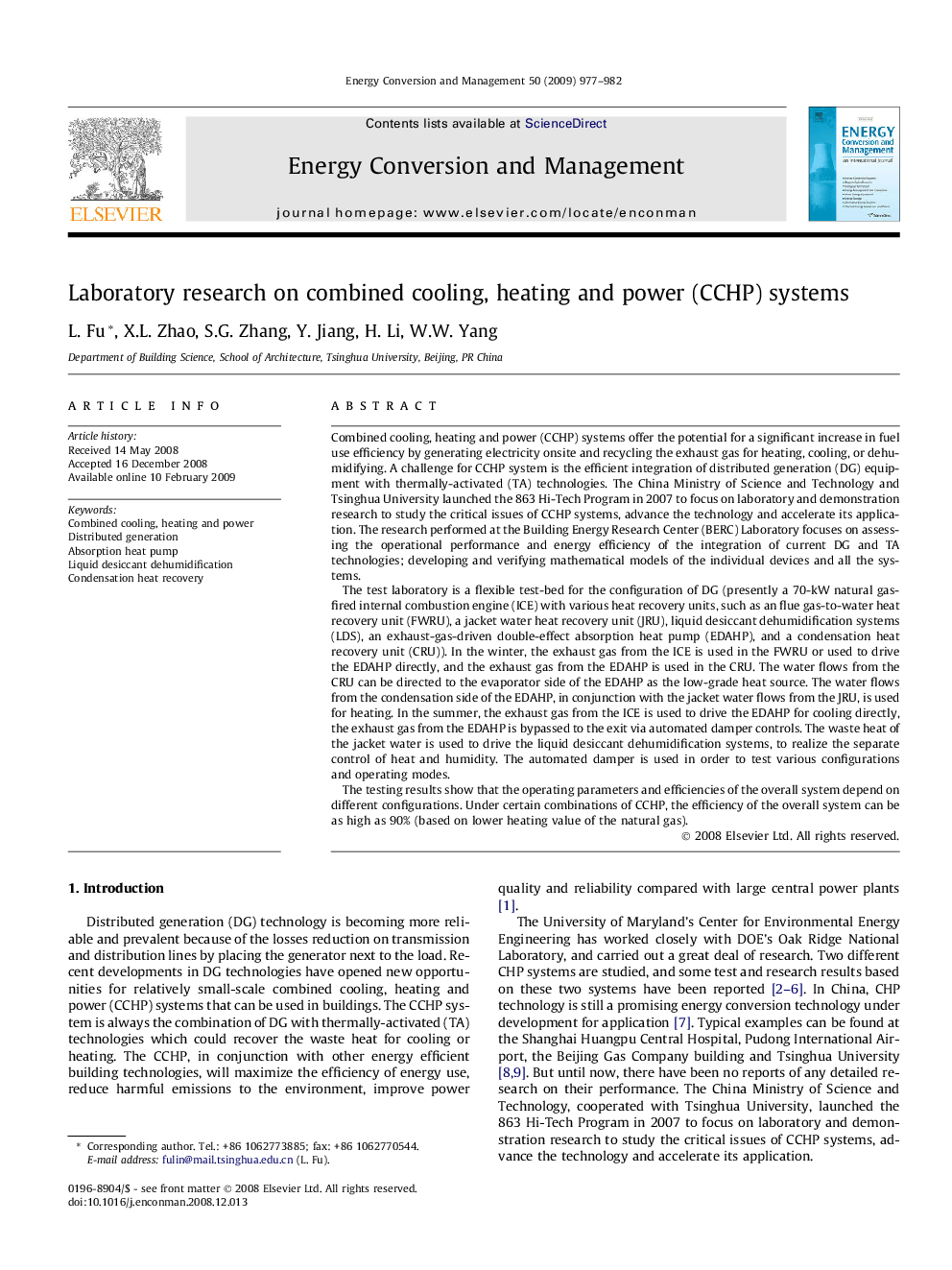| کد مقاله | کد نشریه | سال انتشار | مقاله انگلیسی | نسخه تمام متن |
|---|---|---|---|---|
| 766264 | 897091 | 2009 | 6 صفحه PDF | دانلود رایگان |

Combined cooling, heating and power (CCHP) systems offer the potential for a significant increase in fuel use efficiency by generating electricity onsite and recycling the exhaust gas for heating, cooling, or dehumidifying. A challenge for CCHP system is the efficient integration of distributed generation (DG) equipment with thermally-activated (TA) technologies. The China Ministry of Science and Technology and Tsinghua University launched the 863 Hi-Tech Program in 2007 to focus on laboratory and demonstration research to study the critical issues of CCHP systems, advance the technology and accelerate its application. The research performed at the Building Energy Research Center (BERC) Laboratory focuses on assessing the operational performance and energy efficiency of the integration of current DG and TA technologies; developing and verifying mathematical models of the individual devices and all the systems.The test laboratory is a flexible test-bed for the configuration of DG (presently a 70-kW natural gas-fired internal combustion engine (ICE) with various heat recovery units, such as an flue gas-to-water heat recovery unit (FWRU), a jacket water heat recovery unit (JRU), liquid desiccant dehumidification systems (LDS), an exhaust-gas-driven double-effect absorption heat pump (EDAHP), and a condensation heat recovery unit (CRU)). In the winter, the exhaust gas from the ICE is used in the FWRU or used to drive the EDAHP directly, and the exhaust gas from the EDAHP is used in the CRU. The water flows from the CRU can be directed to the evaporator side of the EDAHP as the low-grade heat source. The water flows from the condensation side of the EDAHP, in conjunction with the jacket water flows from the JRU, is used for heating. In the summer, the exhaust gas from the ICE is used to drive the EDAHP for cooling directly, the exhaust gas from the EDAHP is bypassed to the exit via automated damper controls. The waste heat of the jacket water is used to drive the liquid desiccant dehumidification systems, to realize the separate control of heat and humidity. The automated damper is used in order to test various configurations and operating modes.The testing results show that the operating parameters and efficiencies of the overall system depend on different configurations. Under certain combinations of CCHP, the efficiency of the overall system can be as high as 90% (based on lower heating value of the natural gas).
Journal: Energy Conversion and Management - Volume 50, Issue 4, April 2009, Pages 977–982